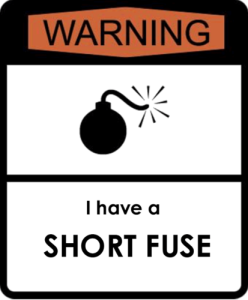“Every manager is an HR manager.”
When I was in Hong Kong last week, I saw this adage in a presentation by our regional HR Lead. I must’ve seen it a hundred times in my career. But this time I decided to meditate on it because it dawned on me that when the times are tough, when the economy is taking a roller coaster ride, when you are in an industry where margins for error are as thin as a strand of hair, when your competition unleashes a war on you with price as their prime weapon, the morale of your team goes south… and then this statement starts to make a lot more sense to all of us managers.
They say “Performance = Ability x Motivation x Opportunity”
As managers we are all responsible for the performance of our teams. It is our job to recruit the right talent, and then lead, facilitate, motivate and develop them. But is that the reality?
Are we doing it all right?
More often than not, our interviews assess people on their Abilities. We build up tons of training programs and resources to further sharpen their aptitude and technical/functional competences. But how seriously do we assess them on their Motivation levels? Do we ensure that they feel valued, involved, engaged and committed, once they join our organization? And how often do we create the right Opportunities for them to perform, to develop, to grow into leaders of tomorrow?
What we often see is companies placing their people in 9-block grids or on bell curves to run statistical analyses. Employees are told they are the most valuable assets, and then treated like a liability. And if they did not perform, managers chart out action plans for them without taking time to validate the most important thing: were they motivated enough to perform in the first place?
It is often said that employees don’t leave organizations, they leave people. I believe that. Employees leave their managers (or their management) most of the time. Am sure we have all read the stats that attrition costs the typical company 125% of the employee’s salary. We can all argue what is the right figure, but the point is loud and clear: If we keep our teams motivated and give them the right relevant opportunities to grow, they will perform to their best of abilities. But if we fail to do so, it will cost us dearly.
1) Get to the root cause of poor performance
As the Chinese proverb goes, “For every hundred men hacking away at the branches of a diseased tree, only one will bend down to inspect the roots.”
Before you can fix performance issues, diagnose it. Is it really due to the employee’s lack of Ability? Or was there a lack of Motivation? It is very easy to establish whether Ability was the factor. Ask questions like the following ones to yourself and your peers:
- Was the task overly difficult, to begin with?
- Can you spot individual aptitude, knowledge or skill lacking?
- Do you see a lack of improvement over time, despite putting the person on trainings etc.?
If you feel any of the above are true, perhaps these people have been poorly matched to their jobs. Or they might have been promoted recently to a position that is too demanding in terms of skill set. You can then apply the following approaches to fix such issues.
a) Listen to the employee’s frustration points and offer help with renewed set of resources. Ask them what additional resources they might need to complete the tasks effectively. This is how you establish with them that you are willing to listen to their problems and here to provide support.
b) Provide training. In today’s world it is very easy to get outdated with trends and technologies and developments. So putting the employee through a focused training program often helps quickly resolve the aptitude and skill gaps.
c) Job rotation or re-assignment. If the employee is a great asset and her job allocation was poorly done upon hire, you can still keep her in the company by re-assigning her to a different team/job where her true skills will be beneficial to you. For example, a marketing executive could be re-allocated to your sales team if you find that her skills are a better fit there.
If the above three do not apply, you might have to let the person go. But in order to decide that, you need to ask yourself the following very important questions:
Was the employee Motivated?
Was I being fair to her as a manager, and did I offer her the right Opportunities?
2) Improve your team’s motivation
If you did the root cause analysis diligently and established that employee Ability was not the cause of poor performance, it’s gotta be a Motivation issue. As a manager it is your responsibility to create a motivating environment for your team to work. This is not a task of HR department alone. How can you do it?
a) Evaluate your organization’s motivation level
A brief survey, an occasional informal discussion with randomly selected employees, a chat at the water cooler or pantry, it really doesn’t matter what mode of “listening” you employ, the most important thing is that you listen to your team. Diligently. And genuinely.
b) Work closely with your employees and create a motivating work environment
You can help create the right motivation levels by jointly setting performance goals with the employee, regularly (and genuinely) assessing performance, and creating provisions for performance feedback.
Performance management
In my current job we let the employees present to their managers what they believe their goals for the next year are. This opens up a great positive dialogue between the employee and the manager, and also garners the ownership (and hence the right motivation) from the employee throughout the year. Your HR leader can help you with tools for SMART goal setting, should you wish to formalize the process. Locke’s goal-setting tool is one widely practiced process, you can refer to here.
Performance feedback is the most critical among all. Do it in a timely fashion, be accurate, open and honest, and create an environment that acknowledges the successes of employees.
Rewards and recognition
Rewards and recognition play a very important role especially when the times are tough and if your company is going through a downturn. This can create unprecedented upswings in motivation levels of your employees. I have seen businesses turn around in amazing fashion by the act of a single leader who kept the team motivated and recognized the great efforts by the team. It is also important to remember that rewards and recognition need not always be monetary in nature. If you clearly understand what motivates your team, you can link your recognition and rewards to it.
Communication
Team motivation can also be improved by improving communication. In one of my previous companies we used to have regular town-hall meetings, informal lunch gatherings (we were a few hundred employees) with lunch buffet served at the premises, functional team outings, team building exercises, etc. And we built one of the fastest growing profitable businesses in an industry notorious for low profits. As business managers, every time we returned from customer visits around the globe we would set up sharing sessions with the whole team – engineers, software developers, product testers, everyone. This was the best way to share with the team how our strategy and execution were going hand-in-hand. And that motivated our team to ruthlessly steal market share from our competition.
3) Create Opportunities for everyone
If your team believes that you are facilitating opportunities – both in their day-to-day work, and for their future career development – they will perform at their peak.
Here is what worked for me in the early years of my career:
My manager asked me to draw up my career road map. He wanted me to project on a timeline what I wished to do 10 years out. With that goal in view, he then asked me to work back on my 5-year plan, and then a 3-year plan. I was asked to further divide the 3-year plan into half-yearly and quarterly plans. Now that started to get very interesting as I immediately saw Ability gaps in my plan that would prevent me from achieving my 5-year and 10-year goals. Then he had my HR manager work with me on a training program and leadership development program that would help me become who I wanted to be in the next 3 and 5 years.
He didn’t leave my career progression in the hands of HR. He then personally put me up on a leadership development assignment in Dubai, coached me meticulously, and then gave me an added senior role in a Joint Venture business unit within the company. He constantly challenged me to take on responsibilities above and beyond what I thought I could do. He diligently created growth opportunities for me. And 10 years down the line, I am doing more than what I had charted out in that road map back in 2003.
Managers, my message to you is simple. Create opportunities for your teams to perform, and to grow. Opportunities trigger Motivation. And Motivation sparks the team to pull our their best Abilities… and that’s how they Perform. Now you see how they are all interconnected.
In all of the above areas your HR leaders will play an active role along with you. However we, as managers, need to take the lead and drive the organization forward. Our teams are our responsibility, and their well being and career progression are our duty. It is our task to facilitate their performance and help them develop into next generation leaders. Those who rely on HR managers to do this task are not worthy of being called a manager, because every manager IS, and should be, an HR manager.




